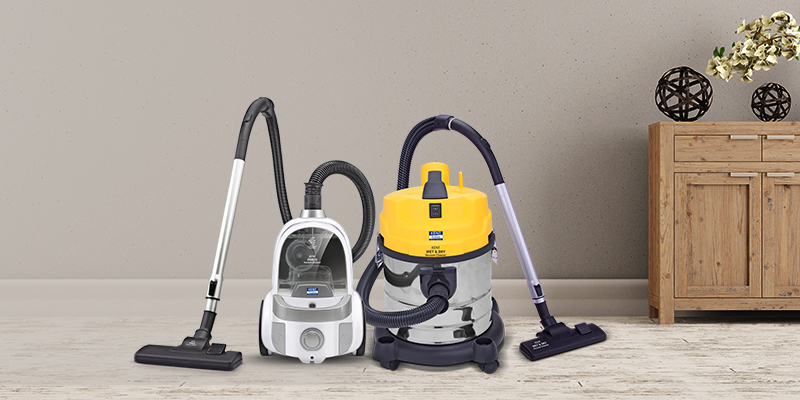Having a clean home is indeed an important part of being stress-free and relaxed. Home is where we spend a lot of time and we would want it to be clean and tidy. While you could use a broom and dustpan to clean the floors, this is not very efficient and it is easy to miss a spot. A better option is to use a vacuum cleaner.
Vacuum cleaners use a suction technique to remove dust, dirt and other debris from floors and carpets. They are affordable and can save you time and hard work. They come in different types, vacuum cleaner prices and sizes, so you might find it tough to find a model that works for you.
If you are confused between bagged and bagless vacuum cleaners, it can get tough to find the right one. To help you understand the difference between the two, let’s have a look at the differences between the two.
Bagged vs Bagless
The main purpose of both types of vacuum cleaners is to get rid of dust and dirt. The ground difference between bagged and bagless models is a disposable feature. Bagged vacuum cleaners are equipped with a dust bag that collects dust and debris, which can be reused after throwing away the dust. Bagless vacuums are easier to maintain and you don’t have to worry about replacing the bag, but you have to make sure the filter is clean.
Both these vacuum cleaner types have their advantages and drawbacks. However, the better vacuum depends on what you’re looking for.
Advantages of Using Bagged Vacuum Cleaners
There are many advantages of using bagged vacuum cleaners.
- Bagged vacuums are much more effective at trapping dirt, dust and other debris, making them ideal for homes with allergic people or pets.
- They are easier to empty and maintain and require less frequent replacement of bags.
- They also have a higher capacity for holding dirt and dust. Wondered where all the dust goes when cleaning the house? Well, it gets collected in a closed bag that can be emptied after your cleaning routine.
- Bagged models are often lighter and more manoeuvrable, making it easier to move around. Using a vacuum with more weight can be difficult to handle while cleaning.
Read Also:- Which is the Best Car Vacuum Cleaner for Luxury Cars?
Disadvantages
With these many advantages, bagged vacuum cleaners also have their own set of disadvantages. Although they do have a lot of disadvantages, you may still want to consider having to buy the bags. When talking about buying bags, we mean older vacuums require changing bags, which can be difficult to find. But, you will not have to deal with this problem in newer versions of these models as you can easily find replacement bags.
Advantages of Bagless Vacuum Cleaners
Bagless vacuum cleaners are becoming more popular because they are easy to maintain and cost much less than their vacuums with bags. Some people don’t even know what a bagless vacuum cleaner is. They’re vacuum cleaners that don’t require a bag. Since they don’t require a bag, they are much easier and cheaper to maintain. Since you don’t have to buy replacement bags, you can save significantly.
Must Read: 5 Best Pop-Up Toasters in India to Make Delicious Toasts
Bagless vacuum cleaners are much easier to empty and maintain and they don’t lose suction power as quickly as vacuums that use bags.
Additionally, bagless vacuum cleaners are often more powerful than their bagged counterparts, making them better at cleaning up large amounts of dirt and debris.
Disadvantages
Bagless vacuums often require more maintenance as the filters need to be regularly cleaned and replaced.
We hope that with this information you have got an idea of what you’re looking for in a vacuum cleaner. Whether it’s to clean your home, office or car, there is a vacuum cleaner out there that will suit your needs. With various attachments, you can turn a regular vacuum into a car vacuum cleaner. So, if you’re looking for a vacuum cleaner that can do it all, be sure to check out the different models and attachments available to find the perfect one for you.





